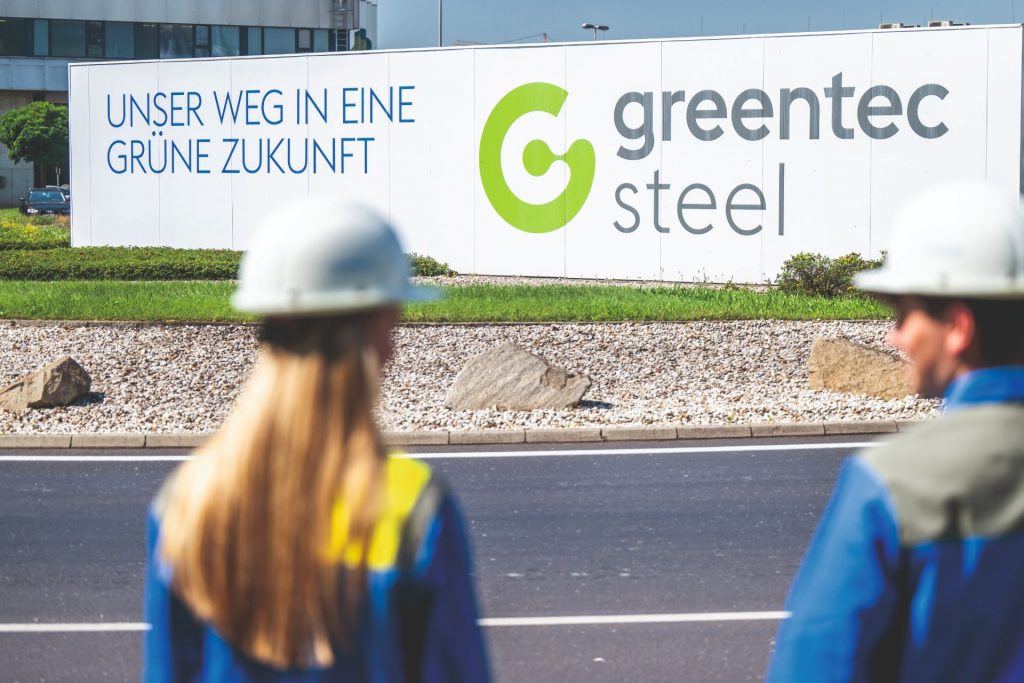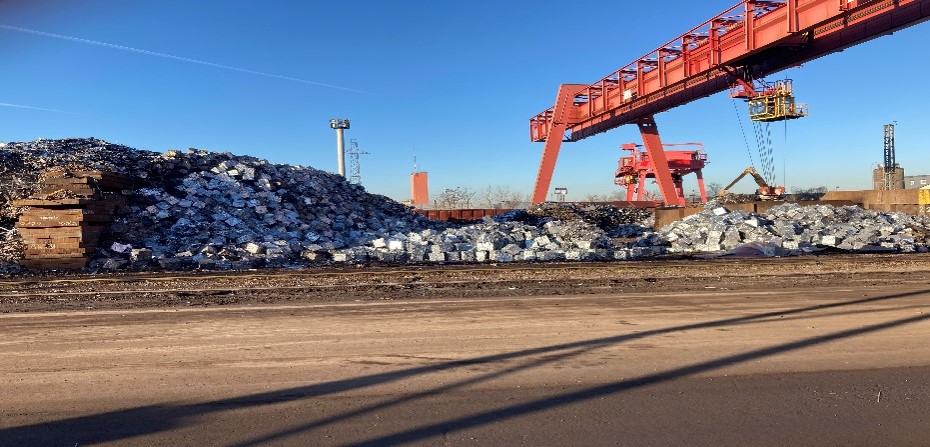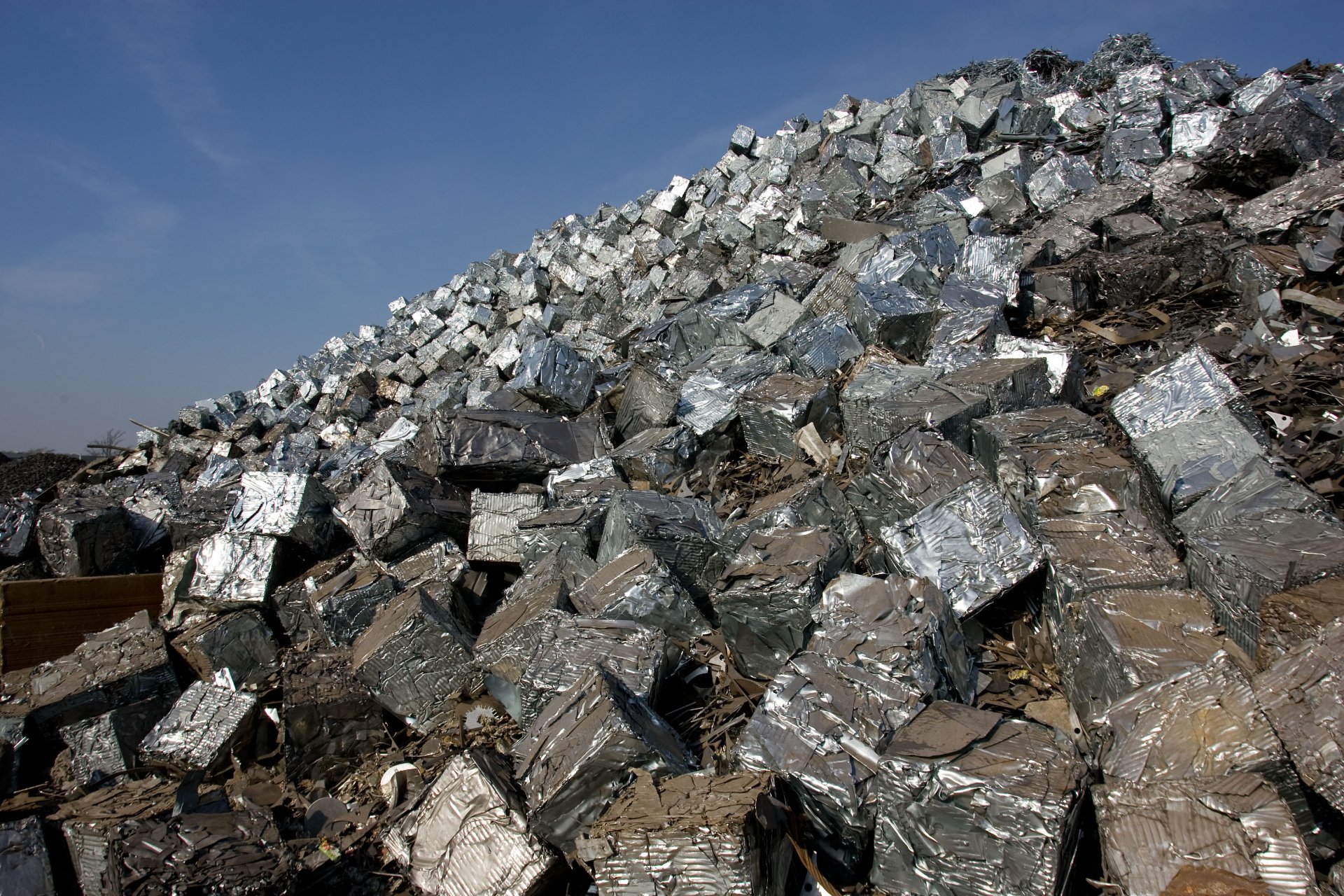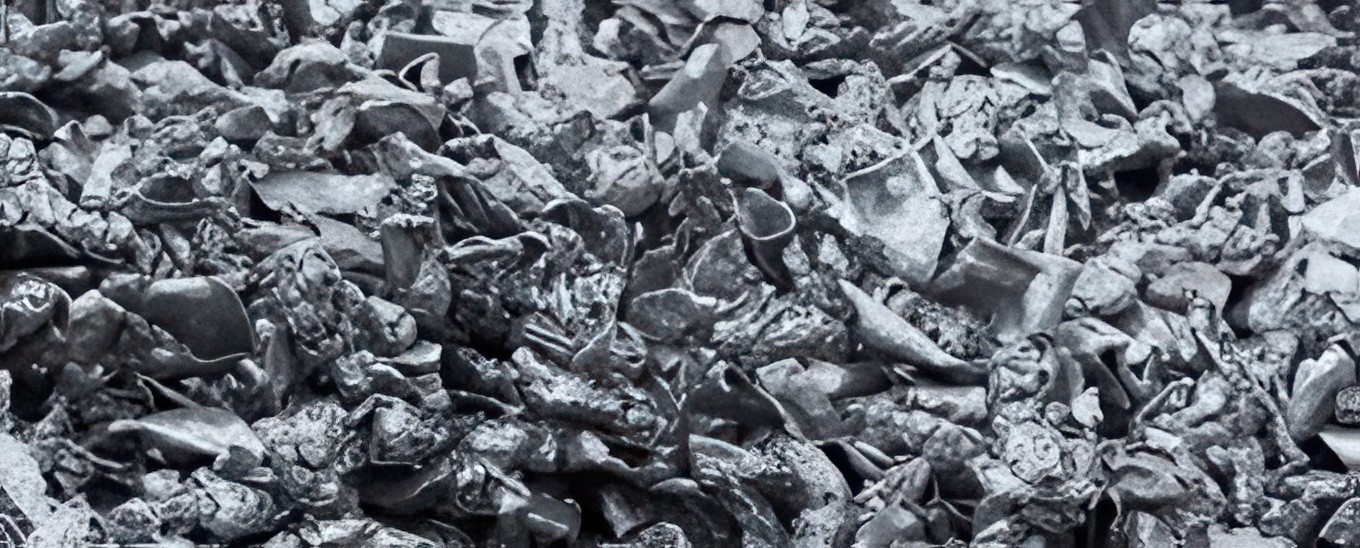Steel cycle: How scrap is turned into green steel
- 6

The fact that steel products are necessary and valuable raw materials in the form of scrap after many years of use and perhaps also after some repairs even after the end of their useful life (\”end of life\”) saves raw materials as well as energy and thus significantly reduces our CO2 footprint.
The scrap used in the EAF is delivered in nine-metre high transport containers on special vehicles from the modernized scrap storage yard. Directly reduced ore – as \”Hot Briquetted Iron/HBI\” – is transported from the warehouse to the EAF via the belt system of the new conveyor bridge. And pig iron is transported by rail in special containers from the blast furnace via the desulphurization plant to the electric furnace. In addition, additives such as lime and other alloys for the high-quality steel grades are supplied via the conveyor bridge.
Scrap is an essential raw material for the production of high-quality steels for our customers. In the future, we will need more and at the same time more high-quality scrap. External scrap will therefore double and the scrap yard in Linz is therefore currently being expanded into a high-performance transshipment center. New scrap transporters, new handling scrap machines with a working radius of 28 m and huge, highly visible scrap baskets nine meters high and eight meters wide are being used. Scrap will also be delivered by rail in the future. A high-performance rail line, service roads and an automated conveyor system are necessary for the smooth and effective transportation of scrap to the sites. In future, 2.2 million tons of scrap or six external scrap trains with a total length of more than 1,500 m can be handled annually over a length of 300 meters.

The high proportion of scrap in production and its role in the steel cycle highlights the importance of scrap quality. Its form – i.e. pressed into cubes or loose – allows conclusions to be drawn about its quality. Pressed scrap consists of the punching waste from the respective customer production, for example when a gap is cut out for the later window in the car or for the display that will be used later. This punching waste is usually pressed into cubes so that it can be transported by rail or truck to save space. This preconsumer or press shop scrap is not mixed with plastics or other metals and is therefore easy to process for the subsequent melting process. For years, we have preferred to deliver our high-quality steels to major automobile manufacturers by environmentally friendly rail transport. High-quality press shop scrap is returned and then reused in the manufacturing process. This ensures direct recycling of the scrap and an important input material for steel production.ngesetzt. Damit ist die direkte Verwertung des Schrotts und ein wichtiger Einsatzstoff für die Stahlerzeugung sichergestellt.

Steel that has already been used should be recycled for reasons of climate protection. In addition, scrap is extremely important for a stable melting process and high-quality steels. Scrap is becoming a scarce commodity due to the strong demand and the previously underutilized raw material resource of recycled scrap is becoming significantly more important. The challenge when using recycled scrap is to separate it by type. Recycling scrap is significantly more expensive than conventional scrap due to the technology-supported separation and shredding, but it has an enormous impact on climate protection and process reliability. But what should be done with scrap from complex products that still contains plastic, textile, glass or other material residues in the steel scrap after separation and shredding?
In order to further reduce the amount of foreign matter in post-consumer scrap and as an alternative to sorting by type, which is expensive, recycling is increasingly being considered during development. Under the keyword \”Design for Circularity\”, experts are designing parts and their components so intelligently that they can be separated by type at the end of their service life and thus optimally recycled.

An exciting project with a major car manufacturer gave us a seal of approval for the recyclability of the steel used as early as 2022. The aim of the pilot project and the cooperation was to recover as much high-quality steel as possible from 100 end-of-life vehicles and use it for the production of new models. The recycled steel could be used for series parts without any loss of quality. 15,000 interior door parts for new cars were obtained, together with even more insights into how efficient and high-quality recycling can be prepared during the development of new cars. Building on the knowledge gained, our technicians are researching further ways to increase the proportion of recycled scrap for series deliveries in a follow-up project.
In another lighthouse project, we are working with Mercedes-Benz and TSR Recycling to research the technical feasibility of circular economy projects in the premium segment. The project spans the entire production cycle: from recycling post-consumer scrap into high-quality scrap to further processing in the steel-producing industry into high-quality steel grades and use in the automotive industry. Specifically, in the joint project, the less pure post-consumer scrap is reprocessed so that it can be used as high-quality steel of the highest grade as a side panel in the Mercedes A-Class Sedan.
Within the framework of our focus greentec steel, we provide an overview of our concrete steps on the way towards long-term green steel production and the innovative processes we are using on this way. We provide information about the challenges we face and the breakthrough technologies we are already researching today in order to achieve our goal of steel production with net zero CO2 emissions by 2050.
Die voestalpine ist ein weltweit führender Stahl- und Technologiekonzern mit kombinierter Werkstoff- und Verarbeitungskompetenz. Die global tätige Unternehmensgruppe verfügt über rund 500 Konzerngesellschaften und -standorte in mehr als 50 Ländern auf allen fünf Kontinenten. Sie notiert seit 1995 an der Wiener Börse. Mit ihren Premium-Produkt- und Systemlösungen zählt sie zu den führenden Partnern der Automobil- und Hausgeräteindustrie sowie der Luftfahrt- und Öl- & Gasindustrie und ist darüber hinaus Weltmarktführer bei Bahninfrastruktursystemen, bei Werkzeugstahl und Spezialprofilen. Die voestalpine bekennt sich zu den globalen Klimazielen und verfolgt mit greentec steel einen klaren Plan zur Dekarbonisierung der Stahlproduktion.